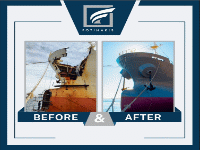Revolutionizing Trade Security: How AI-Driven Container Inspections Can Combat the Export of Illicit Goods
In developed countries, the surge in car thefts for export to less affluent nations has led customs officials to rethink their approach. It’s becoming increasingly clear that inspecting export containers at major international ports will soon be a necessity.
Introduction
While customs agencies typically scrutinize incoming shipments, they frequently enough overlook outgoing ones. This oversight is particularly concerning given the rising tide of luxury vehicle theft in wealthier nations, which is causing meaningful economic repercussions.Law enforcement and customs are feeling the heat to intercept these stolen cars before they leave the contry. Sadly, many Western authorities lack the resources needed to efficiently check thousands of export containers arriving daily.
The growing issue of car theft aimed at overseas markets has created an urgent need for effective inspection methods within customs agencies. Export containers arrive via various means—trucks, trains, and ships—and new technologies are being trialed at land borders were trucks can be scanned using X-Ray systems as they pass through designated areas.
The Role of New technology
X-Ray technology is gradually making its way into land border inspections; however, it only addresses a small fraction of container traffic compared to bustling maritime ports. To enhance efficiency at these ports, combining X-Ray scanning with artificial intelligence could revolutionize how customs officers operate.Given the sheer volume of containers processed daily, relying solely on human inspectors would be overwhelming without technological assistance.
The integration of AI could allow for rapid processing—perhaps evaluating hundreds or even thousands of containers each hour! imagine AI flagging suspicious shipments for further examination by human agents while ensuring that legitimate exports sail smoothly through inspections.The challenge lies in programming AI accurately so it can recognize container contents and match them against submitted manifests effectively.
Tackling Cost Concerns
The types of vehicles targeted by thieves tend to be high-end models that promise substantial profits when sold abroad—this not only affects individual owners but also drives up insurance premiums as companies scramble to cover losses from thefts. Currently, investing in advanced X-Ray technology combined with AI remains costly and has hindered widespread adoption at key ports.
this raises questions about who should bear these costs since insurance firms already handle financial losses from auto thefts.One potential solution could involve governments imposing higher taxes on luxury vehicles more prone to being stolen or introducing inspection fees per container cleared for export—a practice already seen with import tariffs on incoming goods.
A Call for Global Collaboration
The future implementation of AI-enhanced X-Ray inspections might include tracking details like container numbers and contents along with their origin and destination before ships set sail from their departure points. This data could then be shared with destination port authorities while vessels are en route so that any flagged shipments can undergo thorough checks upon arrival.
This kind of international cooperation would streamline processes significantly; faster inspections mean quicker turnaround times between port arrivals and ship loading schedules! By preemptively assessing cargo while still at sea using advanced tech tools like AI-assisted evaluations, suspicious items can easily be identified ahead of time without bogging down operations once docked.
Final Thoughts
A lot has changed as customary inspection methods were deemed sufficient during lower trade volumes decades ago; today’s criminals have adapted swiftly alongside evolving global trade practices allowing them easier access routes for exporting stolen vehicles undetected by standard procedures.
The introduction of cutting-edge inspection technologies holds great promise—not just in curbing high-end auto theft but also minimizing economic fallout associated with such crimes across local communities.
Though, there’s always a risk: as law enforcement tightens controls over one area; illicit activities may simply shift focus elsewhere seeking new opportunities ripe for exploitation!
Content Original Link:
" target="_blank">



















































